Why A Glass Palette Is The Best Palette You Can Get
The one thing I would recommend ever artist use is a glass palette. You can buy one from a art suppliers, or like me, make your own for free. Find out more below:
A glass palette is superior to a wooden or paper palette in many respects:
- It’s easy to clean with a paint scrapper.
- It has a ultra smooth surface to mix your paint on.
- You can effectively make it whatever colour you like by placing coloured paper/card beneath it. You can even print out a tonal scale and place that beneath your palette to use as a reference when mixing.
- It’s just about indestructible.
You can of course buy a purpose-made glass palette from a art suppliers, but you can also make your own much more cheaply, and save your money for paint.
You can buy a piece of tempered glass from your local glass supplier. They’ll cut it to your desired size, and if you ask them they may sand the edges for you as well. NB. If you make your own glass palette you must use tempered glass. DO NOT use frame glass or ordinary window glass, this is brittle and liable to break and harm you.
Personally, I use a 18 x 12 inch piece of tempered glass that was originally a shelf from a household fridge, my mother’s fridge in fact. The fridge had broken and was being recycled, I didn’t just eat all her veggies and steal the shelf.
Try and use the largest palette and you can accommodate, if you have room for a 3 foot square palette, great! …the bigger your palette, the more space you’ll have, and with more space you’ll have more freedom to mix up plenty of paint. A lot of artists, especially beginners, simply don’t use enough paint.
Once you’ve got your glass palette sorted, instead of squeezing out paint directly onto the palette, try taping a strip cut from a disposable paper palette onto the glass, and place your paints out on that. This way, when the paints go hard or get too polluted and messy you can simply pull off that strip of paper and throw it away, before taping on a fresh strip and squeezing out some fresh paint.
After some serous painting your nice glass palette may look like this, in which case you’ll want to clean it. Let me show you how.
I use a old paint scraper, the type used to scrape paint off the walls of a house or remove old paint from woodwork, doors, windows e.t.c. It’s very strong and sturdy with a sharp edge to get under the dried hard old oil paint.
For it to work effectively, and this does depend somewhat on what type of scraper you use, you’ll need to hold the scraper a 45 degree angle. This allows the edge to dig down under the hardened paint and push it away in front of the edge, instead of the edge of the scraper sliding over the top of the paint.
You need to keep the edge of your paint scraper fairly sharp, it doesn’t have to be sharp enough to cut, but it needs to be a fine edge that will slide easily up against the edge of the hardened oil paint, and not slide across it.
Once you have removed all or most of the old hardened paint just give the glass surface a final clean with a rag or tissue soaked in white spirits (or other paint solvent) to get rid of any paint residue left behind.
Tempered glass is hard, really hard, and it’s unlikely that you’ll damage the smooth surface by cleaning your palette in the way described above. I’ve been using my glass palette for years and it hasn’t got a scratch on it. Having said that, if you did somehow manage to damage the surface you could just flip it over and use the other side, and be a little more careful cleaning that side.
So if you’re struggling to judge the colours you’re mixing on that dark wooden palette, or tired of mixing paint on top of old dried up paint because you never quite got around to cleaning your wooden palette properly after your last painting session, give a glass palette a go.
As always, if you enjoyed this post and found it useful, please share it.
Happy painting.
Chris
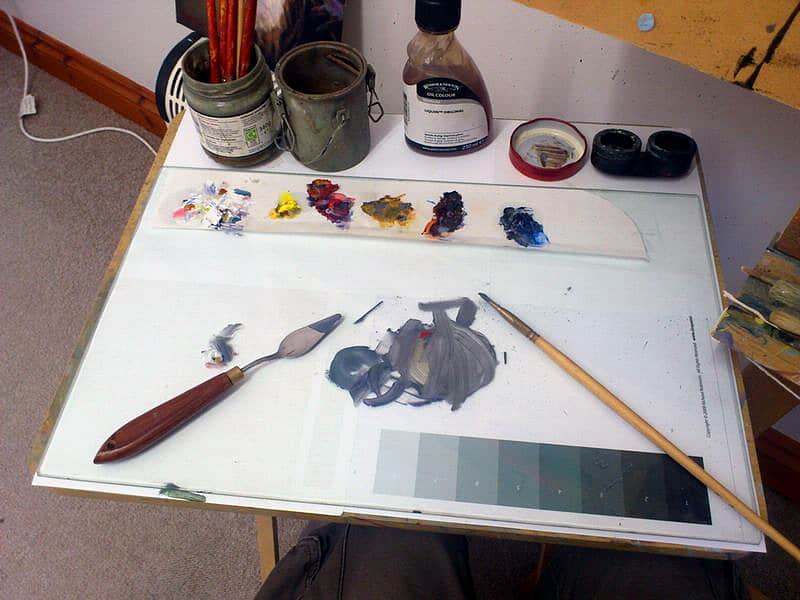
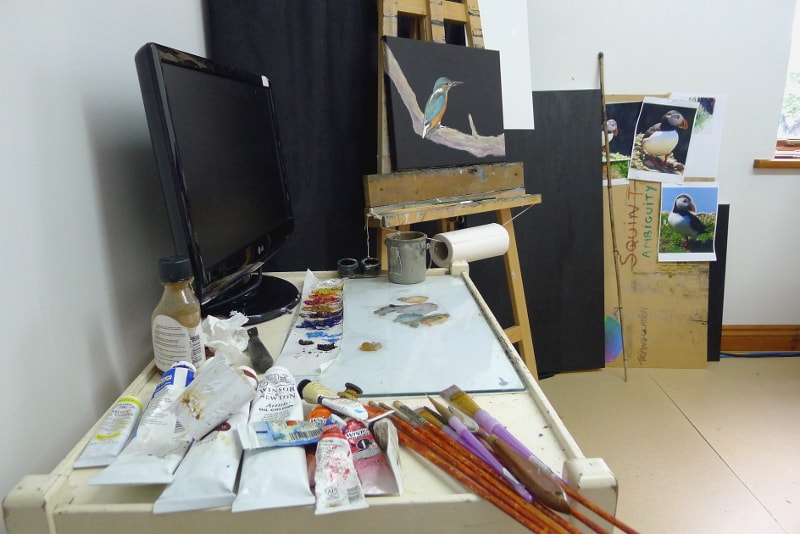
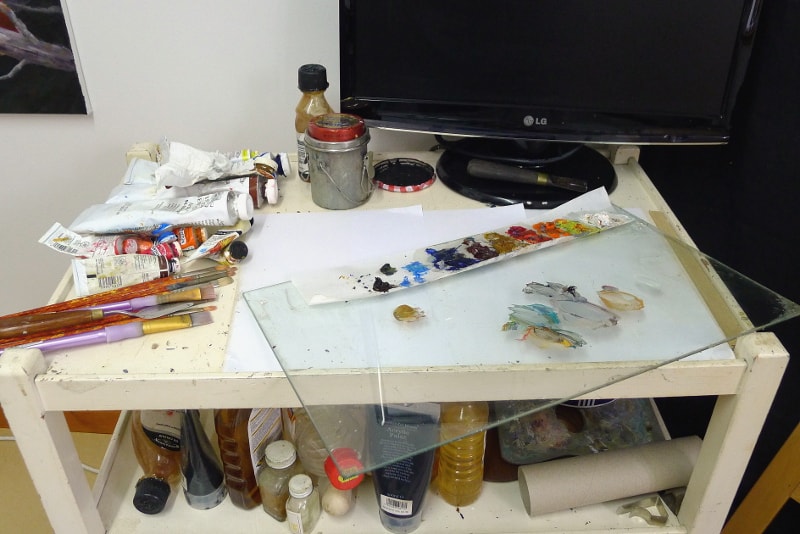
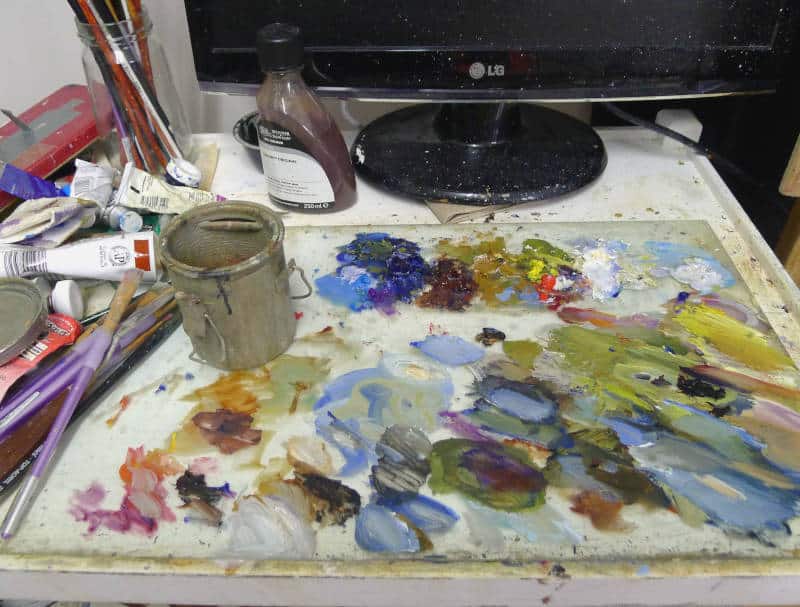
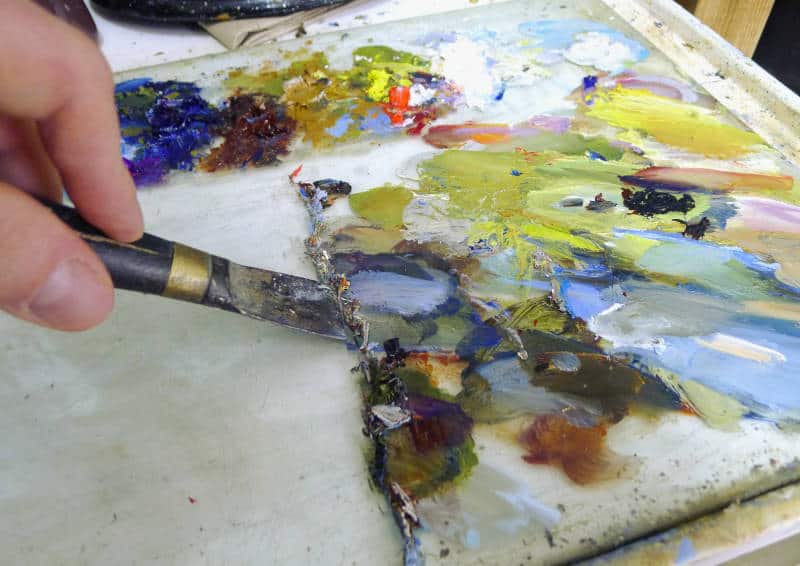
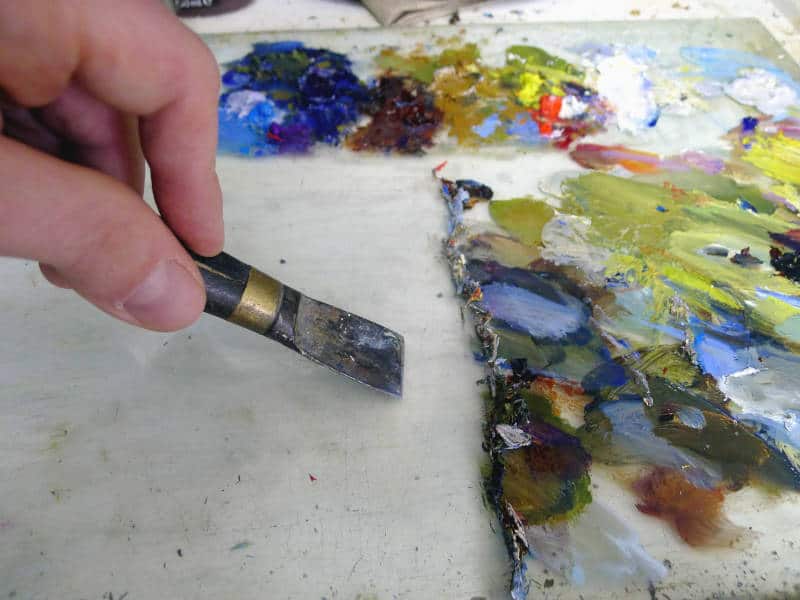
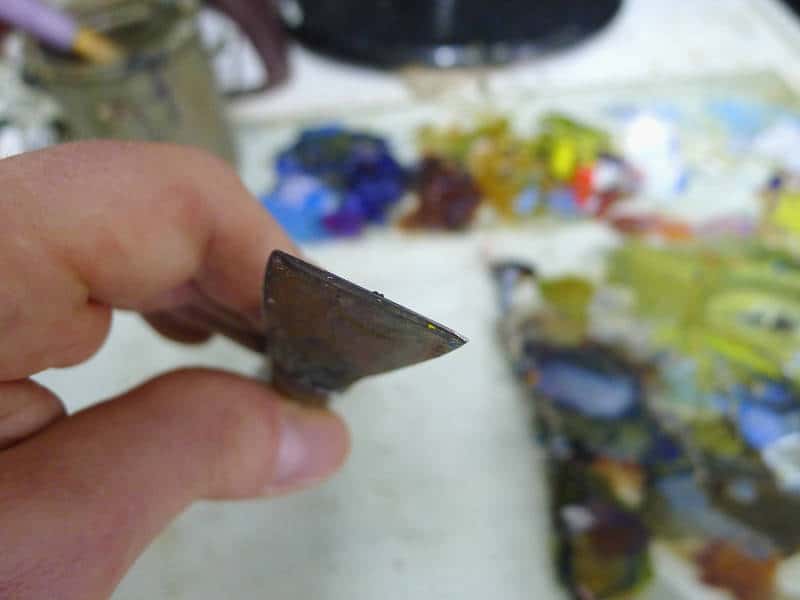
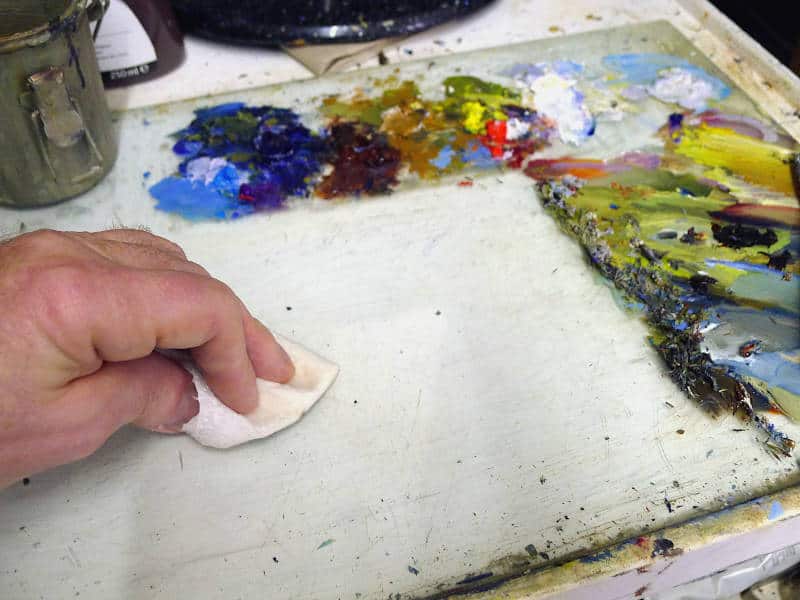
Hiya Chris, nice post. I bought the wrong size toughened glass black splashback and wondered if I could use it as the basis for a painting? I don’t have oil paints but do have acrylics, brusho and some alcohol inks… would I need to gesso the glass fist do you think? I guess I could just experiment!
Hi Lindy, Acrylics won’t adhere to glass very well long term, but oils will. Just clean the glass well first ~ Chris
Thank you for sharing, you are so right! bigger is much better and superior to paper and wooden pallets, for all the reasons you outlined.
I use a glass ‘deviled egg’ round dish I picked up at a garage sale. It is very plain, quite heavy so that I don’t knock it over and it looks quite charming on my desk, clean or not!
Sounds perfect Elle, easy to clean too I bet ~ Chris
Hi, do you think a tempered glass ipad screen saver would be durable enough? looking for a lighter travel option.
Hi Aleia, I’ve not handled a tempered glass ipad screen saver, but I would imagine they are quite robust. Putting a piece of white ‘foam core board’ (google it), cut to size, inside would give it more strength, and add hardly any extra weight ~ Chris
I finally found my reason for holding on to the tempered glass shelves and top from an old computer desk I once had. I just recently been exploring oil’s & was using the glass from a picture frame but like you said not good! Don’t do it!!!! Love your tonal scale idea. My glass is frosted but I’m sure it’ll suffice. I was on my way to get it cut, then I read your article & to keep it as big as possible… I just assumed it had to be a certain size but you know what ass-u-me (ing) does 🙂 the freedom of having a big palette 🎨 oh yeah! I can’t believe I thought there was rules lol
I’m glad you found my post helpful April, you’ll love painting with oils and mixing them in your glass palette, yes the bigger the better – There ain’t no rules!
Hi does your palette have a slight green tint and if so do you do anything to counter it
Do you mean because of it being fridge glass, Michael?
Hi Chris, I’ve recently started using it. It’s better than using other palettes.
Thanks for your blogs. They are really useful and informative.
Glad you found it helpful Harman, happy painting, Chris
Thank you! ♥♥♥♥♥
You’re welcome 🙂
Thank you for sharing this When I was using acrylics I used a piece of clear Perspex or a white tile I now do water colours and use a white palette or a cheap plastic plate from a reject shop
Hi Lynne, you’re welcome. I’ve not used perspex or a tile, but imagine it would be ideal, especially for acrylics, and also nice and easy to clean – always a good thing.